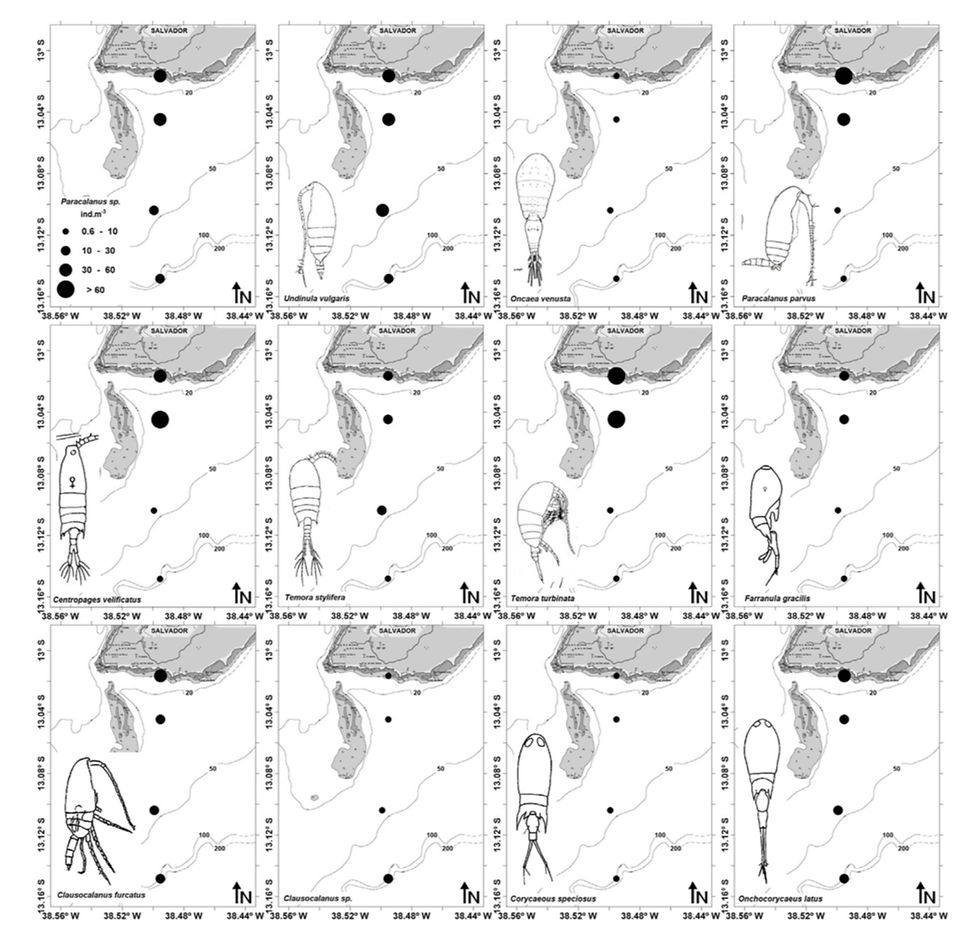Estrutura da Comunidade de Copépodes na Plataforma Continental de Salvador
- landimjmd
- 4 de ago. de 2021
- 2 min de leitura
O GT2.2 do inctAmbTropic Fase II coordenado pelo prof. Ralf Schwamborn acaba de publicar um novo artigo intitulado: "Copepods community structure and function under oceanographic influences and anthropic impacts from the narrowest continental shelf of Southwestern Atlantic" de autoria dos pesquisadores Laura Rodrigues da Conceição, Christiane Sampaio Souza, Paulo de Oliveira Mafalda Junior, Ralf Schwamborn e Sigrid Neumann-Leitão, no periódico Regional Studies in Marine Science (IF: 1.624). Neste trabalho são apresentados os resultados coletados ainda durante a fase I do inctAmbTropic em um transecto situado em frente à cidade de Salvador onde foram realizadas coletas bimensais durante o período Abril 2013 e Outubro 2014.

Variação espacial das espécies dominantes de copépodes na plataforma continental de Salvador entre Abril 2013 e Outubro 2014.
ABSTRACT:
Studies on the Copepod community structure and function under oceanographic influences and anthropic impacts was carried out in the narrowest continental shelf of Brazil. A total of 65 taxa were identified, of which 39 were Calanoida. The most abundant species was Temora turbinata (65.26%) followed by Centropages velificatus, Paracalanuspavus, Undinula vulgaris and Clausocalanus furcatus. A mixture of coastal and oceanic species of Copepods was registered being difficult to separate both populations, however predominated the oceanic species due the narrow shelf and low influence of rivers flux. The frequency of occurrence showed that 24.62% of the species were constants, 13.85% accessories and 61.53% were accidentals. A diversity and abundance gradient were registered from neritic to oceanic waters, however diversity was very low to a shelf area under oceanic influence. The narrow shelf from the studied area permitted the movement of oceanic copepods to coastal areas. The reduced density was caused by the oligotrophic characteristic of the Tropical Water mass present in the area; however, the very low diversity was possibly caused by anthropic impacts (sewage outfalls), mainly in stations closer to the continent. Calocalanus pavo, Undinula vulgaris and Temora stylifera were the best indicators of the area and they were associated to phytoplankton abundance. The Copepod functional traits analyzed presented two sets separated by the reproductive behavior, the biggest set grouped small broadcasters, filter feeders mostly with an omnivore–herbivore strategy and a smaller group, sac-spawner that carry their eggs until hatching. The present study observed that the anthropogenic inputs had a great influence on copepods species and distribution, causing a different dominance pattern between nearshore and offshore.
O trabalho completo pode ser acessado em:



Comentários